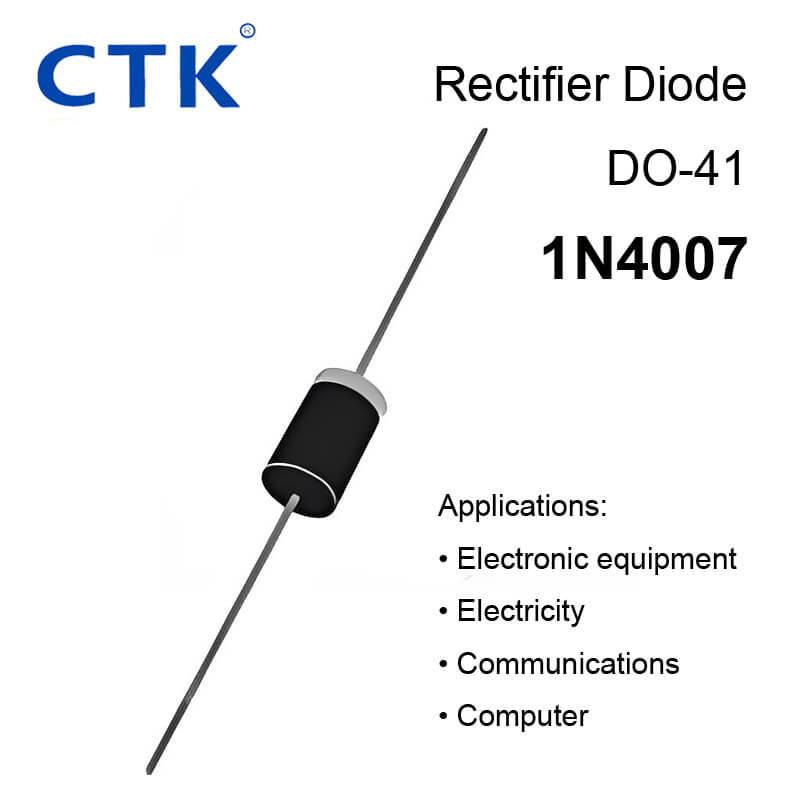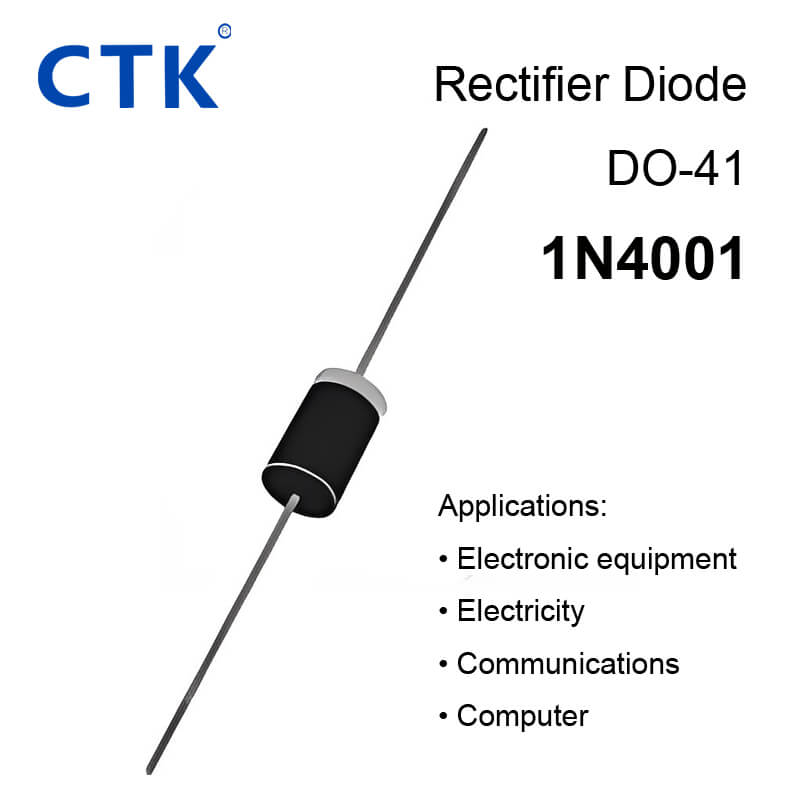When working with electronic circuits, it's common to encounter situations where you need to replace one component with another. One such scenario involves using a
1N4007 diode instead of a 1N4001. Both diodes belong to the 1N400x series, but they have distinct characteristics that make them suitable for different applications. Let's explore whether it's feasible to use a 1N4007 in place of a 1N4001.
Main Differences Between 1N4001 and 1N4007 (1n4001 vs 1n4007)

1. Maximum Reverse Voltage (Vr)
The primary difference between the 1N4001 and 1N4007 lies in their maximum reverse voltage ratings. The 1N4001 has a maximum reverse voltage of 50V, while the 1N4007 has a higher rating of 1000V. This means that the 1N4007 can handle much higher voltages than the 1N4001, making it more suitable for applications with higher voltage requirements.
2. Surge Current Rating (IFSM)
Another significant difference is the surge current rating. The 1N4001 has a surge current rating of 30 Amperes, whereas the 1N4007 has a higher rating of 70 Amperes. This makes the 1N4007 more robust and capable of handling larger surge currents, which can be beneficial in circuits prone to voltage spikes.
3. Construction and Performance
The 1N4007 is often constructed as a PiN diode, which can affect its performance characteristics. PiN diodes generally have slower recovery times compared to conventional diodes, which might be a consideration in high-frequency applications.
Interchangeability
Despite their differences, the 1N4007 can be used as a replacement for the 1N4001 in many cases. Both diodes are part of the same 1N400x series and share similar physical dimensions and pinouts. This makes them compatible in terms of physical installation.
When to Use 1N4007 Instead of 1N4001
• Higher Voltage Applications: If your circuit operates at voltages above 50V, the 1N4007 is a better choice due to its higher maximum reverse voltage rating.
• Surge Current Handling: For circuits that experience significant surge currents, the 1N4007's higher surge current rating makes it a more suitable option.
• General Purpose: The 1N4007 can be used as a general-purpose rectifier in place of the 1N4001, providing additional safety margins in terms of voltage and current handling.
When to Stick with 1N4001

• Lower Voltage Applications: If your circuit operates at or below 50V, the 1N4001 is sufficient and may be more cost-effective.
• High-Frequency Applications: Due to the slower recovery time of the 1N4007, it might not be ideal for high-frequency circuits where fast switching is required.
Conclusion
In summary, while the 1N4007 and 1N4001 have different specifications, the 1N4007 can be used as a replacement for the 1N4001 in many applications.
The decision to use one over the other should be based on the specific requirements of your circuit, such as the maximum reverse voltage and surge current handling. By understanding these differences, you can make an informed choice that ensures the reliability and performance of your electronic circuit.


